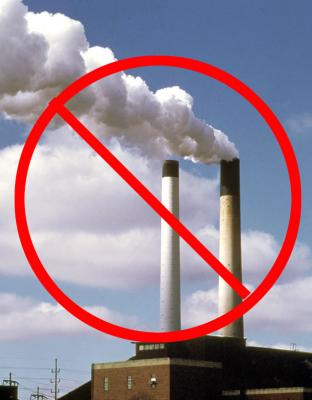 Has California banned the use of coal fired power plants for all future long term contracts? It would seem as if they have with their new emissions based contracting policy. All new long term power sources contracted to provide energy for the state must have emissions lower than that of a combined cycle natural gas power plant. The California Public Utilities Commission (PUC) on Friday January 25th, adopted an interim Greenhouse Gas (GHG) Emissions Performance Standard in an effort to help mitigate climate change.
Has California banned the use of coal fired power plants for all future long term contracts? It would seem as if they have with their new emissions based contracting policy. All new long term power sources contracted to provide energy for the state must have emissions lower than that of a combined cycle natural gas power plant. The California Public Utilities Commission (PUC) on Friday January 25th, adopted an interim Greenhouse Gas (GHG) Emissions Performance Standard in an effort to help mitigate climate change.
The Emissions Performance Standard is a facility-based emissions standard requiring that all new long-term commitments for baseload generation to serve California consumers be with power plants that have emissions no greater than a combined cycle gas turbine plant. That level is established at 1,100 pounds of CO2 per megawatt-hour. “New long-term commitment” refers to new plant investments (new construction), new or renewal contracts with a term of five years or more, or major investments by the utility in its existing baseload power plants.
The PUC’s actions implement Senate Bill (SB) 1368 (pdf) (Perata), which prohibits load-serving entities (investor-owned utilities, energy service providers, community choice aggregators) from entering into long-term financial commitments for baseload generation unless it complies with a GHG emissions performance standard.
“To help mitigate climate change, the PUC has long anticipated capping greenhouse gas emissions in order to ensure that load-serving entities make long-term commitments to energy resources that have GHG emissions profiles that are at least as clean as California’s existing portfolio,” said PUC President Michael R. Peevey.
The Commission approved a policy statement indicating its intent regarding GHG emissions in October 2005. Since then, Governor Schwarzenegger signed into law SB 1368 and Assembly Bill 32 (Nuñez/Pavley), which requires reporting and verification of statewide GHG emissions.
“The Emissions Performance Standard is a vital step towards achieving the emissions reductions goals of AB 32 and protecting our ratepayers against the risk of high carbon prices in the not-too-distant future,” said PUC Commissioner Dian M. Grueneich. “At the same time, this decision leaves the door open to new, advanced technologies and carbon sequestration projects that will allow the energy industry to develop clean and sustainable sources of power.”
“Global warming is a critical issue that needs to be addressed now. This decision is an important interim step until a statewide greenhouse gas emissions cap is in place,” said PUC Commissioner Rachelle Chong.
“Today’s decision is an important step in our efforts to reduce greenhouse gas emissions,” said PUC Commissioner John Bohn. “Our next task is to harness the power and creativity of the marketplace to address global warming.”
The adopted emissions performance standard is intended to serve as a near-term bridge until an enforceable load-based GHG emissions limit is established and in operation. At that time, as directed by SB 1368 (pdf), the Commission will reevaluate and continue, modify, or replace this standard in consultation with the California Energy Commission and the California Air Resources Board.
One still has to wonder if they will be forced to buy power from coal and oil based plants for short term peak loads. This bill will however have the effect of keeping any more coal or oil based power plants from being built in California. The natural end would be that more nuclear, natural gas, and one can hope renewable power plants will be built.
For more information on the PUC, please visit www.cpuc.ca.gov.
This is exactly how regulations should work. Don’t dictate the process, dictate the emissions. Let the companies decide how to get there. I don’t care if they burn old socks as long as nothing (or more reasonably, as little as possible) comes out of the smokestack.